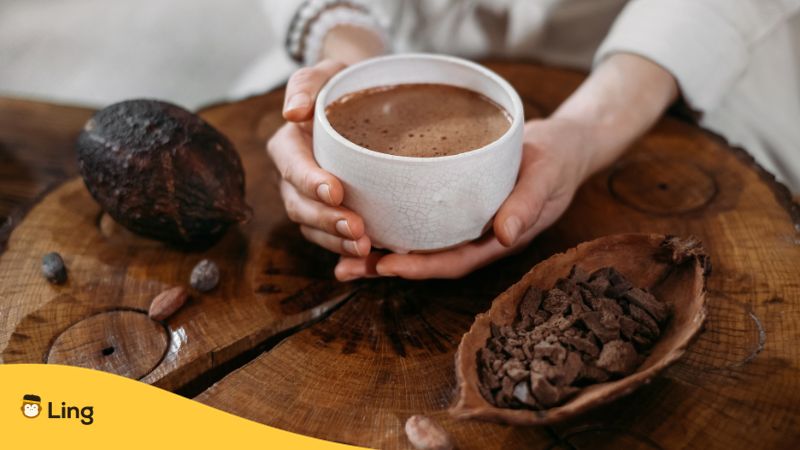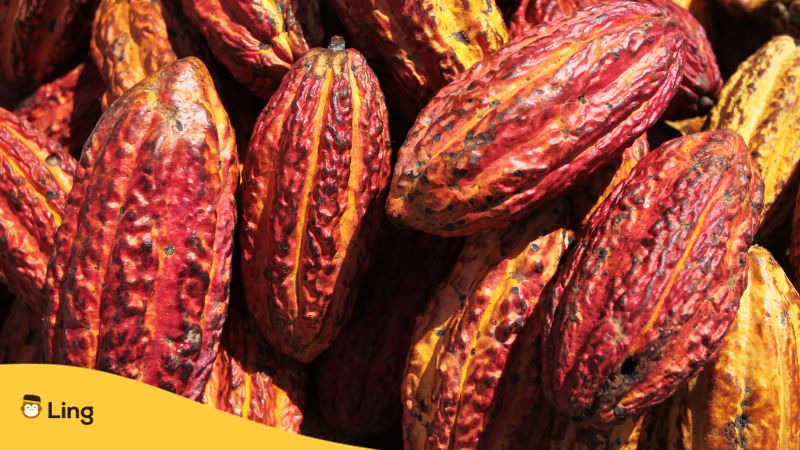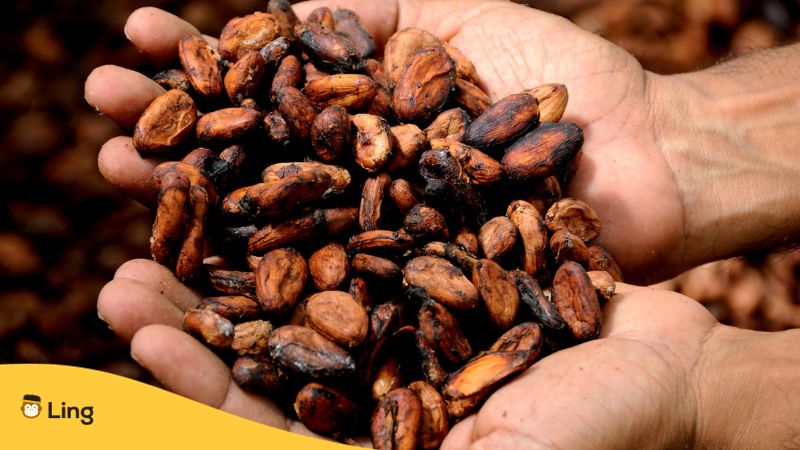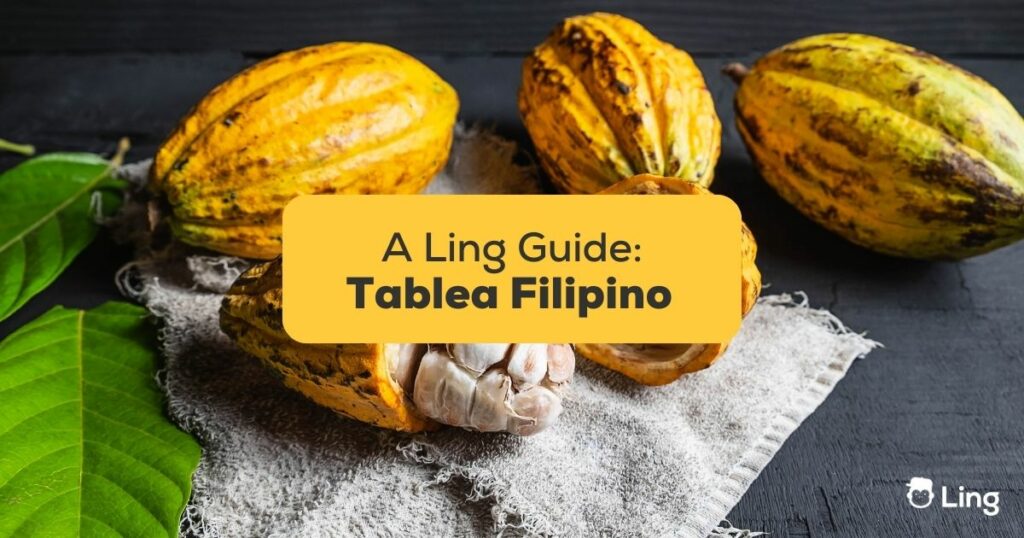Have you ever taken a bite of chocolate so rich, it practically melts on your tongue? The kind of classic chocolate taste that transports you back to childhood? That’s the magical experience tableya Filipino has to offer. This rough-cut chocolate originating from cacao beans is a national treasure that’s been comforting Filipinos for generations.
When perfectly toasted cacao rounds are grated over your dessert or dissolved into a steaming mug of hot cocoa, you’ll understand why tableya stirs such nostalgia and pride in the Philippines. It delivers an old-fashioned chocolate flavor you can’t quite put your finger on. There’s the fudgy sweetness, of course, but also smoky depths and the pleasant grip of bitterness in every bite.
I discovered tableya a few years back on a trip to Tagaytay and have been hooked ever since. Now I want to share the joys of authentic Filipino chocolate with you. This guide will explore delectable tableya types, take you through traditional production methods, offer insider tips on where to buy, provide my favorite ways to cook and bake with it, and pass along some classic Tagalog phrases to help you bring home that this chocolate happiness into your kitchen.
Let’s begin!
Table of Contents
What Is Tableya?
For those unfamiliar, tableya (also known as tablea) is a beloved chocolate product originating from the Philippines. It’s made from cacao beans that are grown, harvested, and processed in various regions across the islands.
So what sets tableya apart from a regular chocolate bar? Tableya contains no additives like milk or sugar. It is 100% pure toasted cacao liquor that delivers a signature bittersweet flavor and coarse, crumbly texture when grated. You’ll also notice subtle fruity and nutty notes from the cacao beans used.
In Filipino cuisine, tableya lends its cocoa goodness to all kinds of desserts, drinks, and native dishes. From hot chocolate to cake frostings to the classic rice porridge champorado, tableya enriches everything it touches with nostalgic chocolate happiness.

Types Of Tableya Filipino
There are a few main varieties of tableya sold in the Philippines, each with its own distinctive flavor and best uses:
Pure Tableya
This type contains 100% cacao with no additives. Pure tableya delivers the sharpest chocolate taste and has a more bitter flavor and grainy texture. It’s often used for making rich hot chocolate or melted into native dishes. Pure tableya packs the most antioxidant benefits as well.
Sweetened Tableya
The sweetened variety contains added sugar, reducing bitterness and adding a touch of caramelized sweetness. Many Filipinos grew up on sweet tableya stirred into hot water or milk for an easy chocolate drink. Sweetened tableya also works well baked into cakes, cookies, and candies.
Flavored Tableya
For additional flavor dimensions, some tableya is infused with ingredients like coffee, vanilla, strawberry, mint, mango, chili pepper, and more. Flavored cocoa tablets can be grated over ice cream, whipped into milkshakes, or craft melted chocolate for dipping fruit. Feel free to get creative!
Regional Tableya
Some Philippine regions produce signature tableya known for specific qualities. Davao is hailed for its high-quality cacao, while Bohol and Cebu are also top producers. Certain brands like Tsokolateria or Dolce specialize in tableya-making as well. Testing different origins allows you to experience chocolate subtleties.
No matter which type you choose, Filipino table offers a rich cacao experience that stands apart from factory-made chocolate. It manages to taste nostalgically old-fashioned yet excitingly new!
How Is Tableya Made?
Tableya undergoes a unique production process starting from harvested cacao pods. It involves four main steps: Fermenting and drying, roasting, crushing, and molding. Let’s go over each below!
Fermenting And Drying
After cacao beans are removed from the pods, they are piled and covered to let natural yeasts kickstart fermentation. As the beans ferment, the distinct chocolate flavors start to develop. The beans are then dried in the sun or with warm air to reduce moisture for storage.
Roasting
Now the flavor transformations start to intensify! The cacao beans are roasted in large drums that distribute heat evenly without burning for 20-30 minutes. As they near the ideal golden brown roast, chocolate notes become dominant, and the husk shells peel off easily.
Crushing
Time for pulverization! The roasted beans have their hulls removed and are loaded into grinders that crush them into a paste called cacao liquor or cocoa liquor (which confusingly contains no alcohol!). More grinding forms a smooth, flowing liquid that is the base of all chocolate products.
Molding
For tableya, the cacao liquor is temporarily poured into molds lined with banana leaves or soybean paper before hardening. This shapes them into rounds or rectangles. They are then cooled, and the tableya tablets are popped out, wrapped, and ready for grating!
Keep in mind larger manufacturers use automated equipment for mass production. Smaller tableya makers in the Philippines will complete the process manually. Either way, with just four steps, you have authentic chocolate goodness!

Popular Tableya Brands In The Philippines
With so many cacao growers and tableya producers across the archipelago, there are tons of beloved brands Filipinos turn to for their chocolate fix:
Auro Chocolate
This Filipino bean-to-bar company prides itself on transparent sourcing and ethical cacao farming partnerships. Their award-winning 77%, 85%, and 100% dark chocolate Auro tableya discs highlight single-origin flavors.
Theo & Philo
Specializing in artisanal batches, this brand offers single-origin tableya wrapped in ornate packaging. Popular picks are their Davao 81% and Costa Rican 74% bars with fruity, nutty notes.
Malagos Chocolate
Having won multiple international awards, Malagos highlights sustainably-grown cacao from family farms in Davao. Their 85% premium dark tableya delivers a mind-blowingly smooth, velvety texture.
Kablon Farms
From their estate on the foothills of Mount Kanlaon, Kablon grows top-grade cacao turned into both sweetened and 100% tableya with an incredibly loyal following.

Where To Buy Tableya?
Tableya has become more accessible beyond the Philippines, but your best bet is still sourcing it in the islands or from Filipino specialty stores.
Tableya In The Philippines
In the Philippines, tableya can be found in the baking aisle of most mainstream grocery stores, wet markets, and convenience shops. Trust me… they will have aisles stacked with tableya brands of all cacao percentages and flavors. You can also find tableya sold in bulk or packaged as pasalubong gifts in the many Robinsons, Puregold, and SM Supermarket chains across the islands.
At local markets or basic grocers, average prices for standard tableya discs or blocks run:
- Small (100g) – ₱25 to ₱50
- Medium (250g) – ₱60 to ₱120
- Large (500g and up) – ₱100 to ₱200
Factors like the cacao percentage, manufacturing size, and added ingredients like sugar or flavorings can affect costs. For example, a basic 125g sweetened tableya tablet may sell for around ₱45. But a similar-sized single-estate 80% dark Davao chocolate bar from Malagos could be priced at ₱180 or more.
When buying tableya direct from specific cacao farms, chocolate boutiques, or as specially packaged gifts, you’ll find more premium pricing but exceptional quality.
Tableya Online
Thankfully for those abroad, it has gotten easier to buy authentic tableya bars online in recent years. International shipping is offered through some online marketplaces like Amazon, which has also expanded its imported tableya selection. Depending on where you are located, delivery times average 1-2 weeks.
For the freshest shipments direct from small Filipino makers, check out sites like Auro Chocolate Factory, Theo + Philo, or Tigre y Oliva. Just be aware that minimum quantity orders or high international shipping fees may apply. But treating yourself or gifting premium tableya straight from the source is worth it!

How To Prepare Classic Filipino Hot Chocolate
One of the top ways Filipinos enjoy tableya is dissolved into a steaming mug of thick, luxurious hot chocolate. Here is an easy recipe to make the traditional sweet treat chocolate from scratch:
Ingredients
- 1 disk (125g) sweetened table or table cacao nibs
- 1 cup water
- 4 cups milk
- 1⁄2 teaspoon vanilla extract
- Sugar to taste
Directions
- Grate or chop your tablea disk into small even-sized pieces so it melts smoothly.
- In a saucepan, bring the water to a simmer then add in the grated tableya. Stir constantly as it melts completely and forms into a thick chocolate paste, about 2-3 minutes.
- Gradually pour in the milk while continuing to mix. Add up to 1⁄4 cup extra milk if it thickens too much.
- Once fully blended and hot but not boiling, remove the pan from heat. Add in vanilla and sugar, starting with 2 tablespoons, tasting and adding more to your preferred sweetness.
- Carefully transfer your chocolate beverages into mugs to serve. Top with a bit more grated tablea for extra richness if desired. Enjoy while hot!
How To Buy Tableya From A Filipino
When visiting the Philippines, you’ll want to know the Tagalog terms to ask for tableya as you shop at local markets or specialty stores. Here are helpful phrases to use:
“Mayroon ba kayong tableya?”
This means “Do you have tableya?” You can also specify if you are looking for pure or sweetened by asking “Mayroon ba kayong maalat na tableya/matamis na tableya?”
“Magkano ang tableya?”
Ask this to inquire “How much is the tableya?” so you know the price per piece, bundle, or weight.
“Kukuha ako ng tableya”/ “Pabili ako ng tableya”
Say this to state you would like to purchase some tableya. Indicate how many discs or the weight amount, such as “tatlong tableya po” for 3 small discs.
“Ano ang pinakamasarap na tableya?”
Ask the seller, “What is the most delicious tableya?” to get recommendations on top-quality or popular regional brands they carry.
“Pabalot nito, pakiusap”
After choosing the tableya say, “Can you wrap this, please?” if you want it packaged up rather than loose.
“Salamat po!”
Don’t forget to thank the staff by saying “Thank you!” after your purchase.
With these handy Tagalog expressions, you can confidently chat about tableya and select some authentic Filipino chocolate to take home. The sweet diplomacy will be sure to earn smiles at the market or store. After just one velvety bite of tableya back home, you’ll be eager to return for more!
Ready To Take Home Your Philippine Tableya?
From learning how those rustic cacao discs are crafted by hand to grating the rough texture over flan or sipping its sweet maple tones melted in a mug, tableya offers nostalgic tastes and textures that no mass-produced bar can replicate.
As you explore the pure, sweetened, and artfully flavored varieties, you’ll discover why Filipinos have such an insatiable passion for their local chocolate specialty. Tableya simultaneously invokes old-world tradition and contemporary artistry that let cacao shine in its purest form.
To continue learning all about Philippine culture, food traditions, must-try dishes, key phrases, and insider tips for any travel or interactions, be sure to download the Ling app. This incredible resource packs tons of essential info so you can dive deeper into the islands’ one-of-a-kind hospitality, customs, and language. Download it for FREE now!
































































